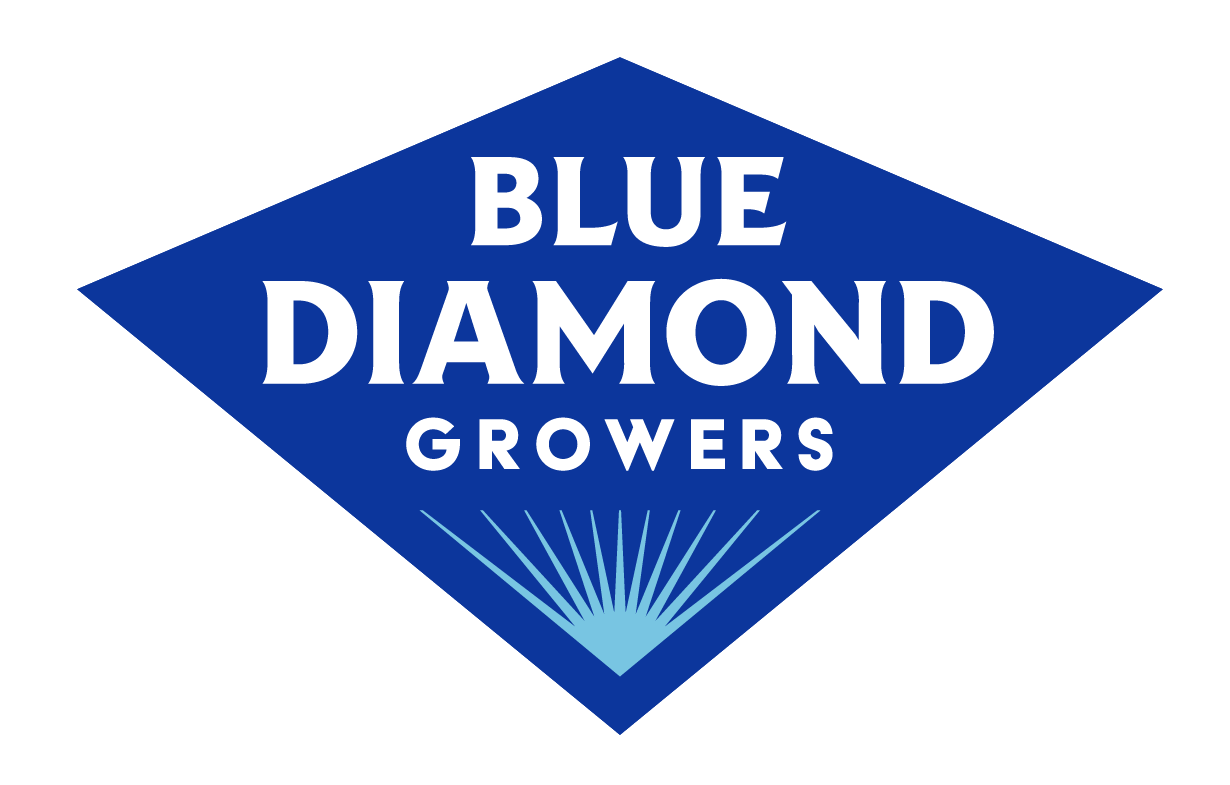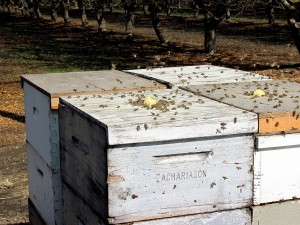Blue Diamond Almonds Bloom Report – February 3, 2014
|
First Signs of the 2014 California Almond Crop Bloom …This report covers observations and conditions just prior to the start of the 2014 bloom. The next scheduled report will be posted on Friday, February 7, 2104. Abnormally dry conditions have dominated the winter months in the Sacramento Valley, resulting in record low water levels in the Sierra Nevada snowpack as well as in the state’s system of reservoirs. Temperatures during the winter months have been quite diverse. Much of December was dominated by very cold temperatures, with morning minimum readings dropping into the low and mid 20’s for approximately two weeks. January, however, provided quite a contrast, with daily maximum readings ranging between the mid and upper 60’s to lower 70’s for much of the month, driving bud development throughout the region. The extended period of dry weather, which lasted in excess of 50 rain-free days, was finally broken with the arrival of a fast moving weather system that passed through the state on January 29th and 30th. Rainfall was a bit on the sparse side, however, with total precipitation levels ranging from 0.25 to 0.5 inch. Additional amounts were reported in isolated areas, dropped by thunderstorms that roamed through the southern areas of the region. Bloom in the Sacramento Valley is getting under way… at least in the most advanced areas of the region. Observers are reporting that orchards on the west side of the Sacramento Valley are running ahead of the balance of the region. The early blooming Sonora and Winters varieties along the west side are currently presenting an average of approximately 5% of their flowers for pollination, with the most advanced orchards having as much as 35% of their flowers open and available. While the varieties in some plantings appear to be fairly well synchronized, others are exhibiting a greater degree of variation. Observers have also noted some variation within orchards on foothill soils, with trees at the top of the hills running ahead of those in the lower elevations. Further, orchards on sandy soils and those that experienced a high degree of moisture stress last year are also running ahead of other plantings. Meanwhile, in the remainder of the region, observers have noted that the pace of development is running significantly behind the west side, with the Sonora presenting only a trace amount of open flowers. In the Central part of the region, early blooming varieties such as the Avalon and Sonora are predominately in the green tip stage, with advanced examples moving into the pink tip stage. Observers have reported finding a few “rogue” open flowers visible in the Sonora, and while the Nonpareil and California type varieties are swelling, they remain overwhelmingly in the dormant stage. Bees have been very active within the orchards having open flowers. Beekeepers have been moving colonies into the orchards for about two weeks and the poor rainfall the region have received this year has resulted in very little weed growth in and around the orchards. This also means that there are very few flowers available for the bees to forage upon until the bloom begins in earnest. Dry conditions have dominated the region’s weather, forcing growers to provide supplemental water where it has been available. Growers who receive their water from the federal Central Valley Project have been informed that they will receive no water this year, even though they do not have to contend with trans-delta conveyance issues that limit movement of water to the San Joaquin Valley. Deliveries from the State Water Project are a bit more complicated. Sources have stated that contractors with superior rights may be able to receive a portion of their contracted amounts while others with inferior rights will receive no water. Observers have reported that well drillers have been working through the winter months, producing new wells and reconditioning older ones as growers work to develop alternative supplies of water. In some instances, growers are using water from private wells to supplement the moisture levels within their orchards, while those who rely solely on “surface water” are waiting for the deliveries from their local irrigation districts. Unfortunately, depending on the grower’s location, water from those districts may be in very short supply. While some producers are anticipating that they may have enough water to fulfill most of their needs, rumors of severe cutbacks are circulating around the region. Obviously, growers have been working to secure alternative water supplies. Well drillers have been busy producing new wells and reconditioning older wells. And growers have been seeking opportunities to purchase water where it is available. Growers have spent the winter months preparing their orchards. Pruning operations and brush shredding have proceeded with little difficulty and growers have been able to freely complete applications of soil amendments and dormant season disease management treatments. As previously noted, while the lack of moisture has limited weed growth, growers will be forced to employ alternative weed control measures during the growing season in order to maintain weed-free tree rows into the harvest. The normally used herbicide materials require some degree of rainfall in order to be effective on the soil surface and the absence of adequate rainfall has eliminated their use this year. To view the full comprehensive report visit http://www.bdingredients.com/blue-diamond-almonds-bloom-report-february-3-2014/
|

